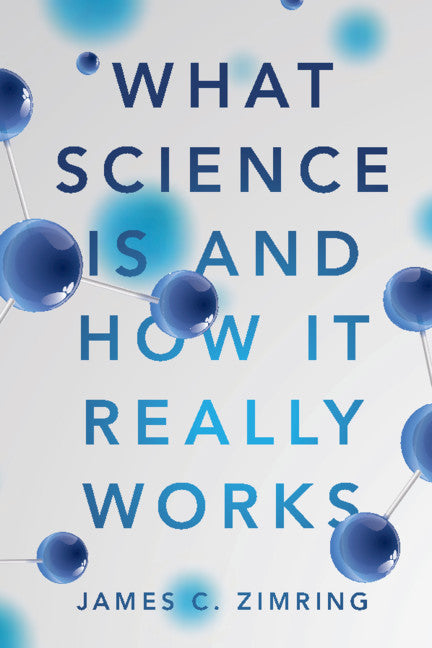Freshly Printed - allow 4 days lead
Couldn't load pickup availability
What Science Is and How It Really Works
A timely and accessible synthesis of the strengths, weaknesses and reality of science through the eyes of a practicing scientist.
James C. Zimring (Author)
9781108701648, Cambridge University Press
Paperback / softback, published 18 July 2019
402 pages, 10 b/w illus.
22.8 x 15.2 x 1.8 cm, 0.66 kg
'I certainly wish I had read a book like Zimring's when I started my graduate studies; this would have helped me avoid many of the mistakes I made … I recommend Zimring's book for students who contemplate a career in science … Zimring says that science very much needs its fringe thinkers, although it often treats them badly. In conclusion, to paraphrase Winston Churchill, science is the worst way to understand the world except for all the other ways. What Science Is and How It Really Works gives lots of examples of how the scientific method has allowed the big brains of unpromising apes to understand the world better than we had any right to expect.' Stanley A. Rice, The American Journal of Psychology
Scientific advances have transformed the world. However, science can sometimes get things wrong, and at times, disastrously so. Understanding the basis for scientific claims and judging how much confidence we should place in them is essential for individual choice, societal debates, and development of public policy and laws. We must ask: what is the basis of scientific claims? How much confidence should we put in them? What is defined as science and what is not? This book synthesizes a working definition of science and its properties, as explained through the eyes of a practicing scientist, by integrating advances from philosophy, psychology, history, sociology, and anthropology into a holistic view. Crucial in our political climate, the book fights the myths of science often portrayed to the public. Written for a general audience, it also enables students to better grasp methodologies and helps professional scientists to articulate what they do and why.
Introduction
Part I: 1. The knowledge problem, or what can we really 'know'?
2. Adding more building blocks of human reasoning to the knowledge problem
3. Holistic coherence in thinking, or describing a system of how humans reason and think
Part II: 4. How scientific reasoning differs from other reasoning
5. Natural properties of a rule-governed world, or why scientists study certain types of things and not others
6. How human observation of the natural world can differ from what the world really is
7. Detection of patterns and associations, or how human perceptions and reasoning complicate understanding of real-world information
8. The association of ideas and causes, or how science figures out what causes what
Part III: 9. Remedies that science uses to compensate for how humans tend to make errors
10. The analysis of a phantom apparition, or has science really been studied yet?
11. The societal factor, or how social dynamics affect science
12. A holistic world of scientific entities, or considering the forest and the trees together
13. Putting it all together to describe 'what science is and how it really works'.
Subject Areas: Life sciences: general issues [PSA], Popular science [PDZ], History of science [PDX], Impact of science & technology on society [PDR], Philosophy of science [PDA], Science: general issues [PD]


